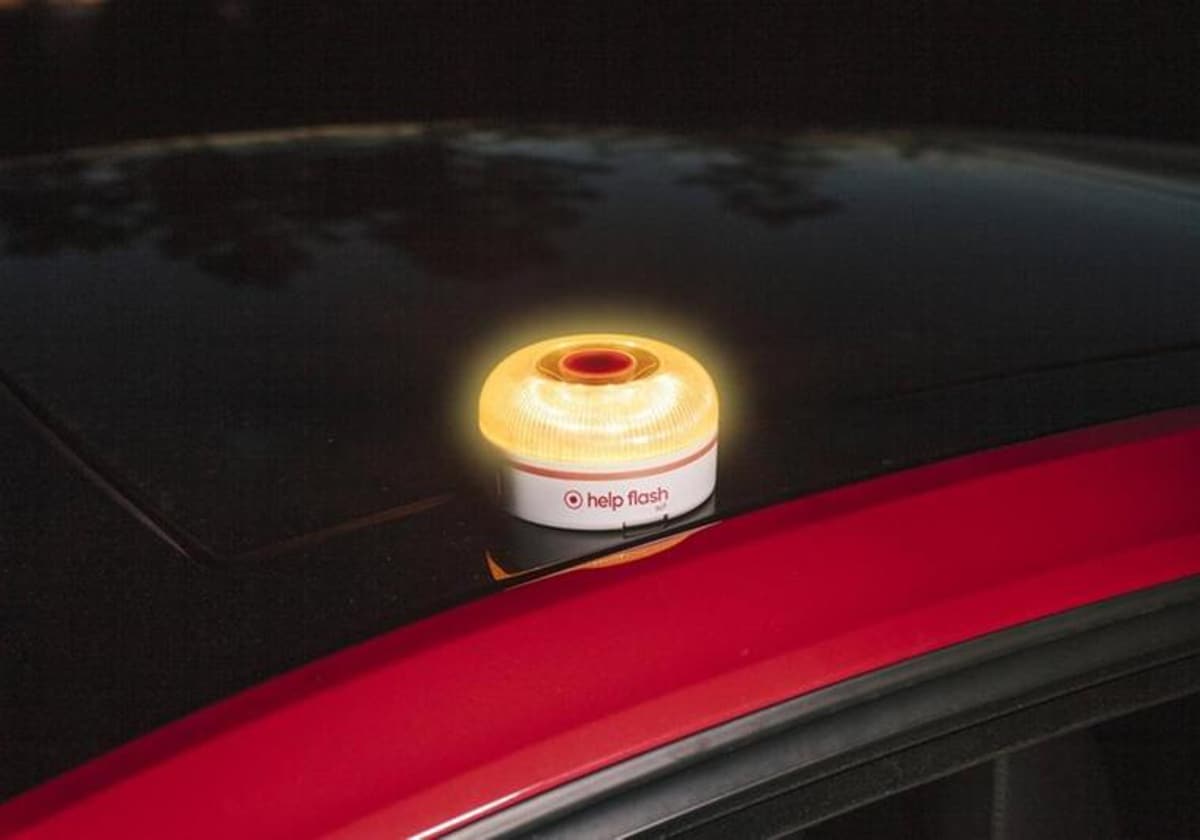This is how the new V-16 emergency beacons work, that will replace hazard warning triangles in Spain
ROAD SAFETY ·
The new road safety device for motorists is already a legal substitute for the old triangles and will be mandatory from 2026S.M.
Viernes, 10 de marzo 2023
Since the start of 2023 the use of V-16 emergency warning beacons on vehicles in Spain has been approved by Spain’s traffic authority, the Directorate-General for Traffic (DGT). Two types of beacons are now legal: analogue and 'connected.'
A 'connected' device means that other drivers are not only alerted to a problem by a flashing light, but the DGT is also alerted virtually.
The connected V-16 lights are already a legal replacement for hazard warning triangles and will be mandatory from 1 January 2026. Analogue warning lights, which have been on the market for several years, and triangles can only be used until 31 December 2025.
The Help Flash IoT connected beacon, the first V-16 signal developed by the Galician company Netun Solutions, went on sale on Friday 13 January after obtaining the approval of the DGT.
The device integrates an eSIM with NB-IoT (Narrow-Band Internet of Things) technology that provides connectivity. In the event of an accident or breakdown, when the beacon is activated, a notification is sent immediately, automatically and anonymously to the DGT traffic control centre indicating its exact location and this information is shared in real time through the DGT 3.0 Platform and the National Access Point to other road users.
In this way, road users will have prior access to information about any incident along their journey, via a notification that will appear on roadside information panels, on their phones and in the connected cars.
The cost of device communications will be included in the retail price and will be guaranteed for at least 12 years. Personal details are not required because the connectivity is included in the price of the device.
The information received by the DGT is anonymised. The beacon only informs the DGT 3.0 about the geolocation of the vehicle that has had an incident on the road.
The beacon device will remain inactive until the user switches it on due to an incident. Only then will it activate and send the vehicle's geolocation data to the DGT traffic control centre. Information on the location of the accident vehicle will be sent every 100 seconds and will stop being sent once the beacon is deactivated.
These beacons are powered by commercially available alkaline batteries that provide a minimum of 2.5 hours of battery life in emergency mode. These type of batteries, which do not suffer from sulphur corrosion, retain more than 80 per cent of their capacity for up to four years.
Help Flash IoT is compatible with the leading roadside assistance application, Incidence APP. By linking it to your device, this app helps you contact your insurer or emergency services quickly and intuitively, sending you the help you need depending on whether you've had an accident or breakdown.
